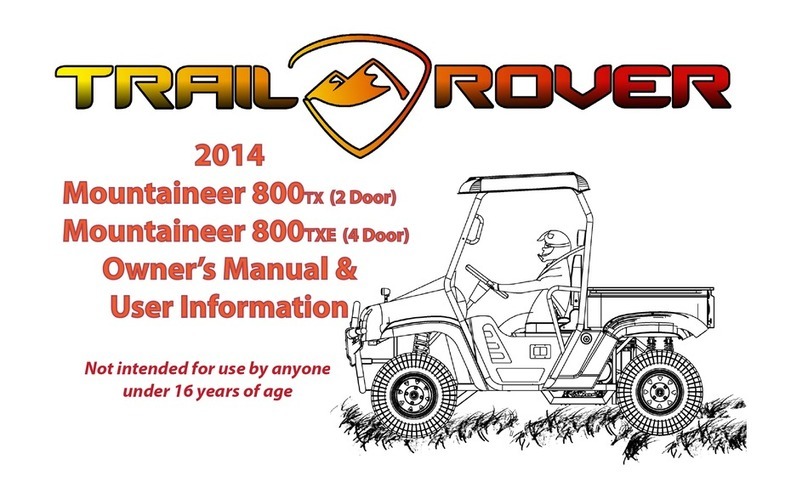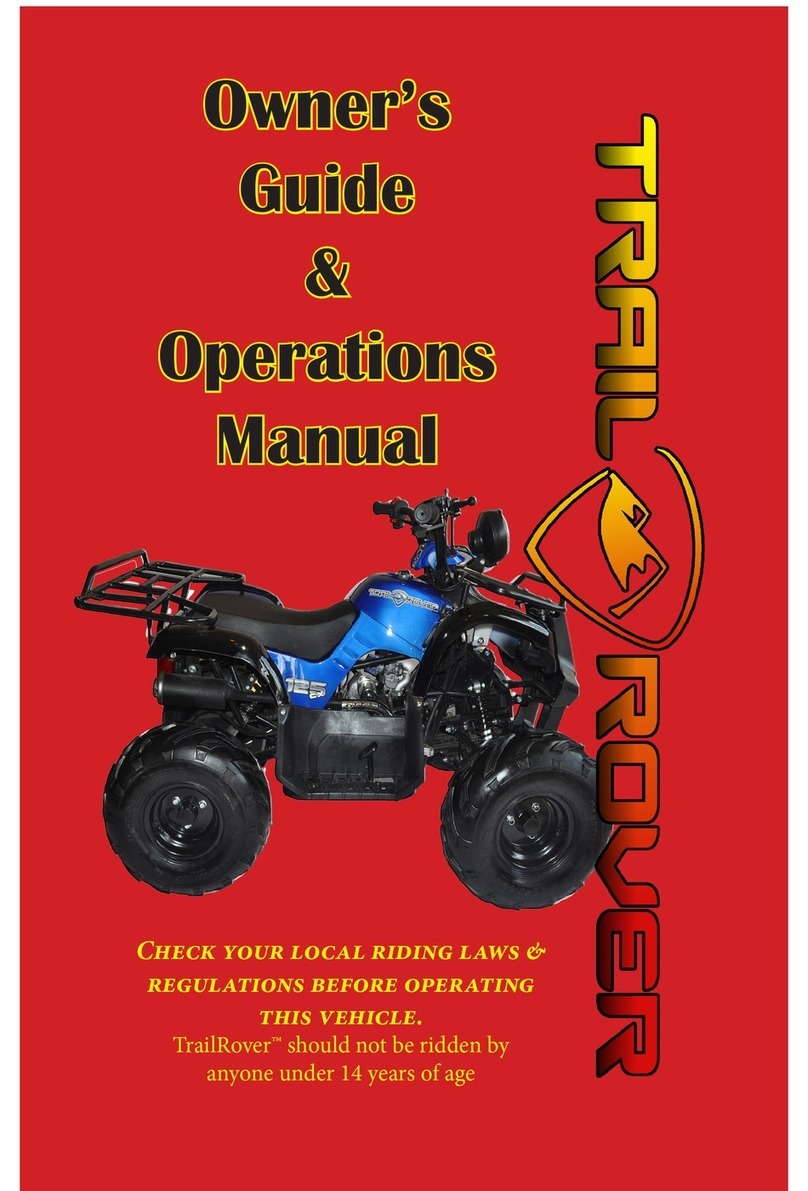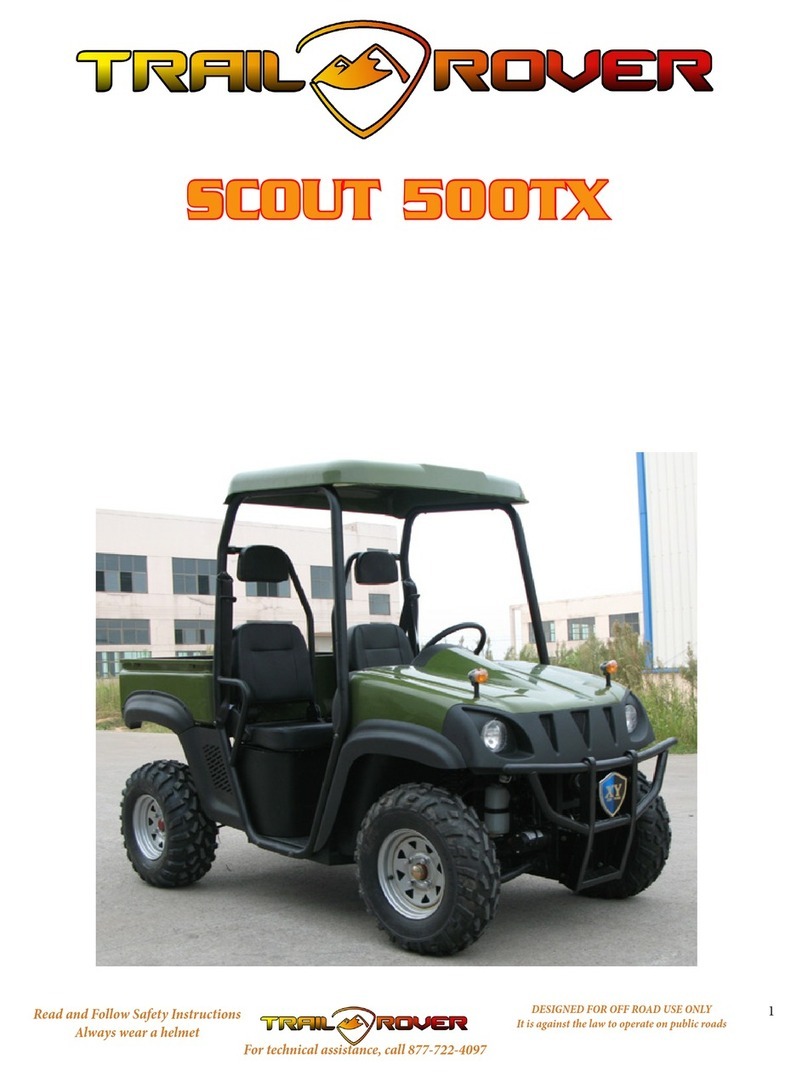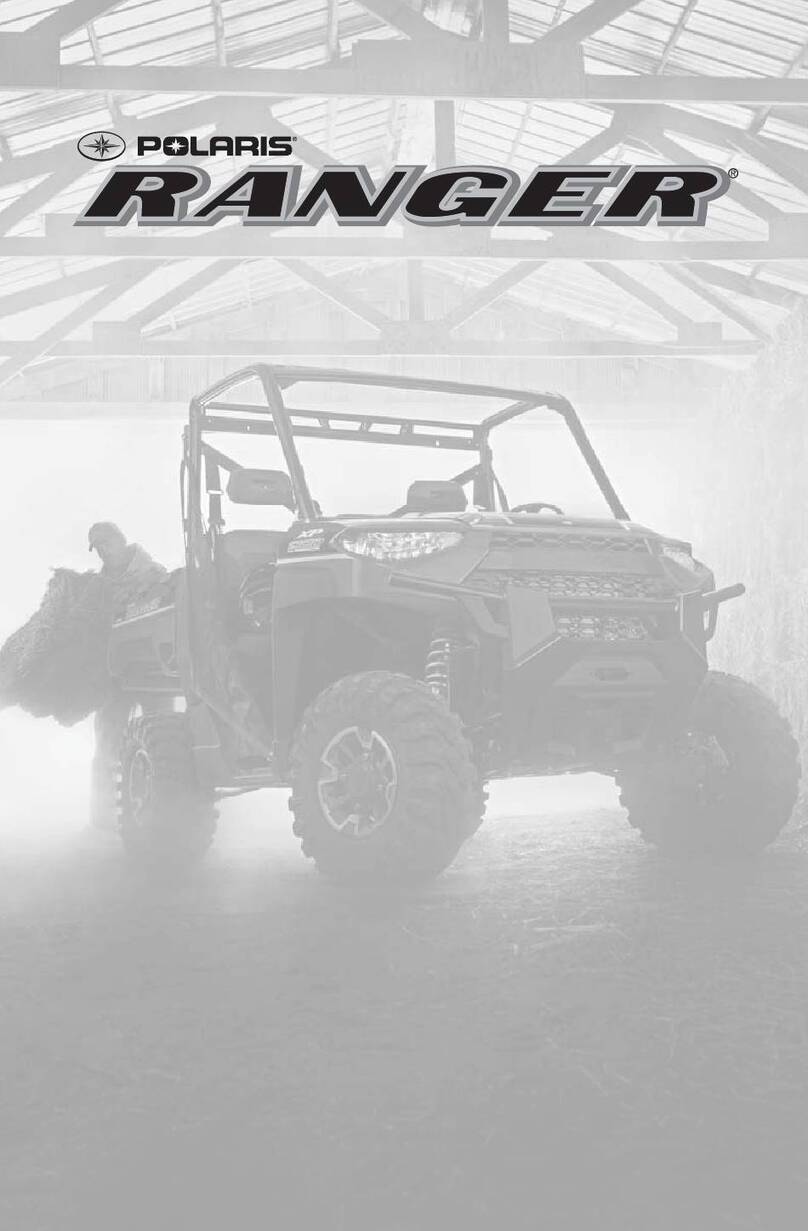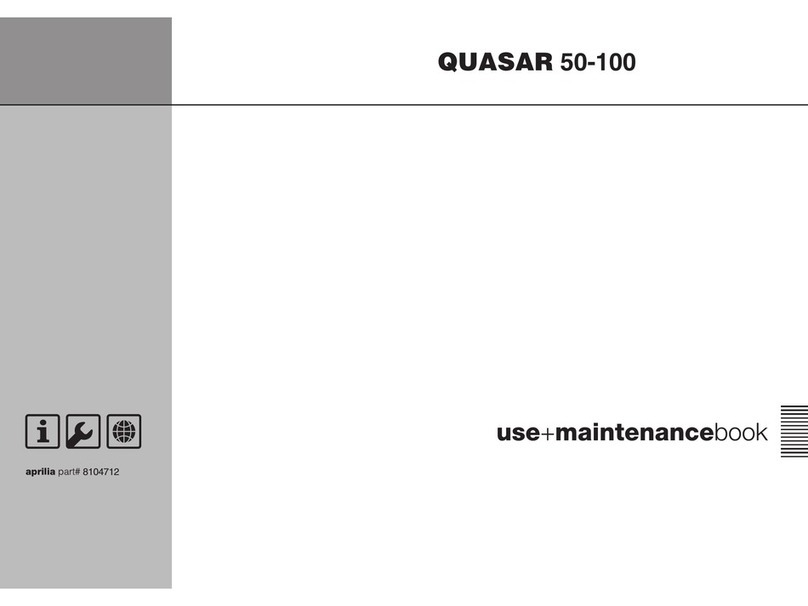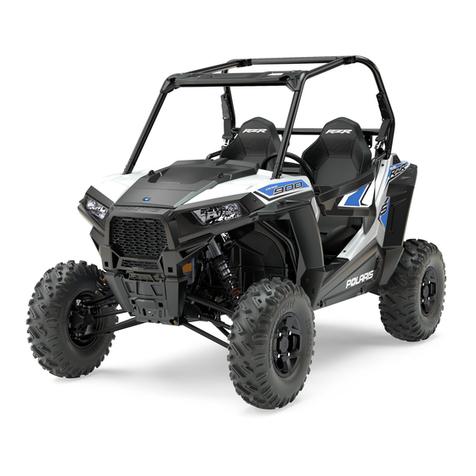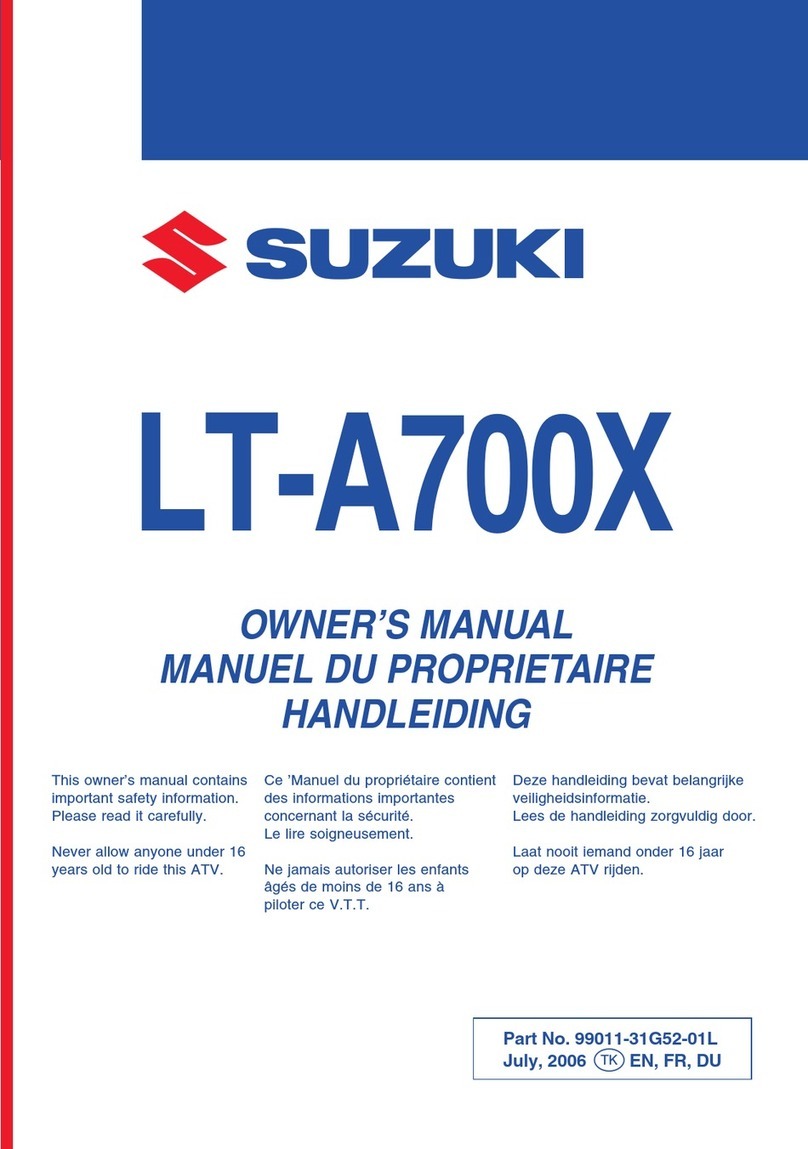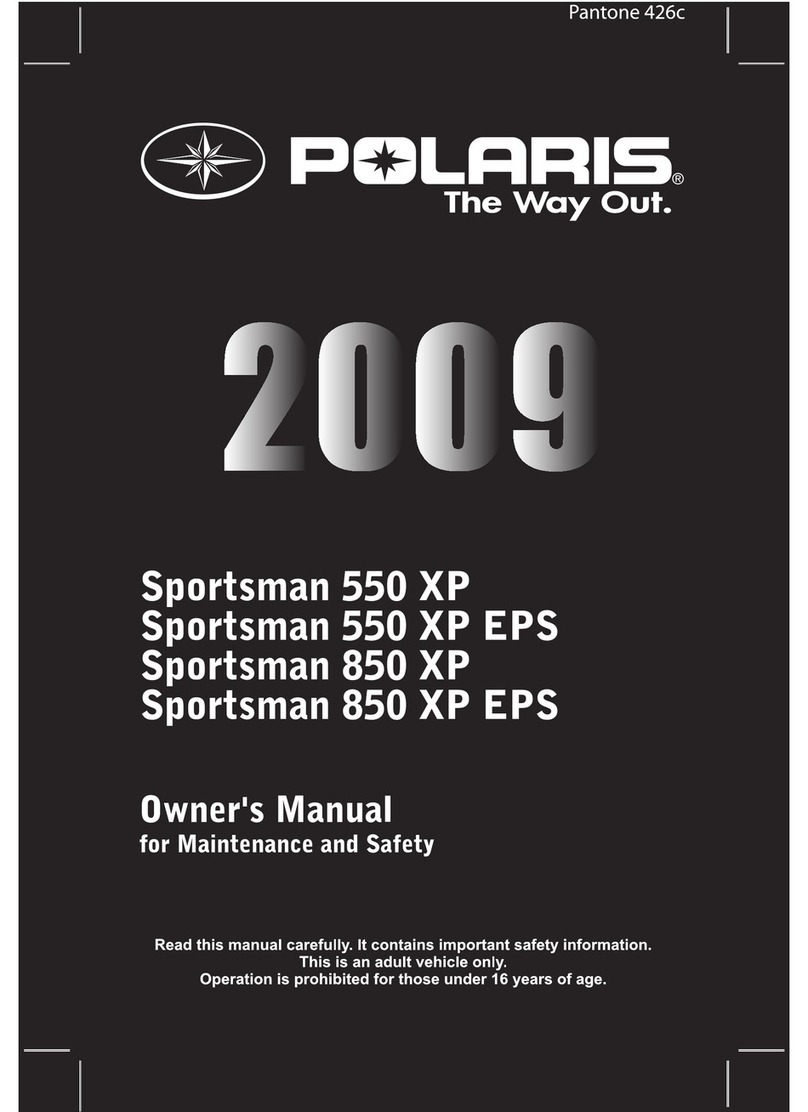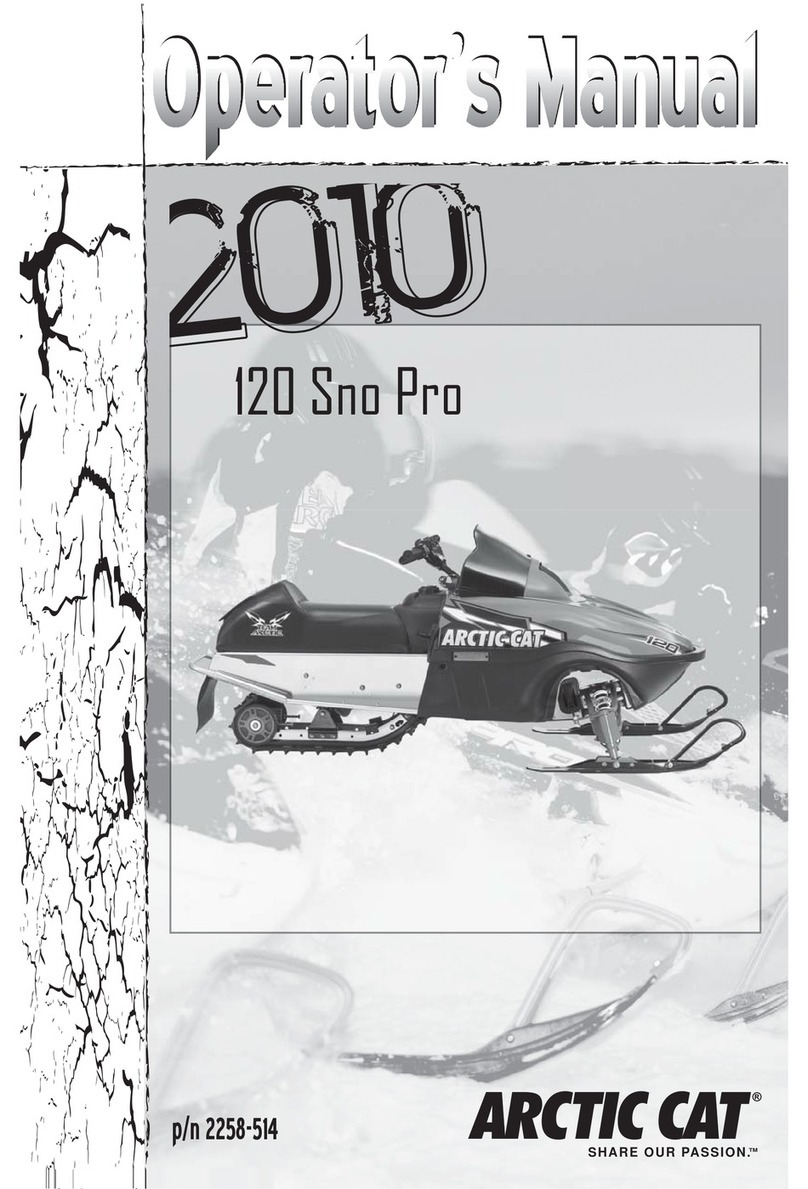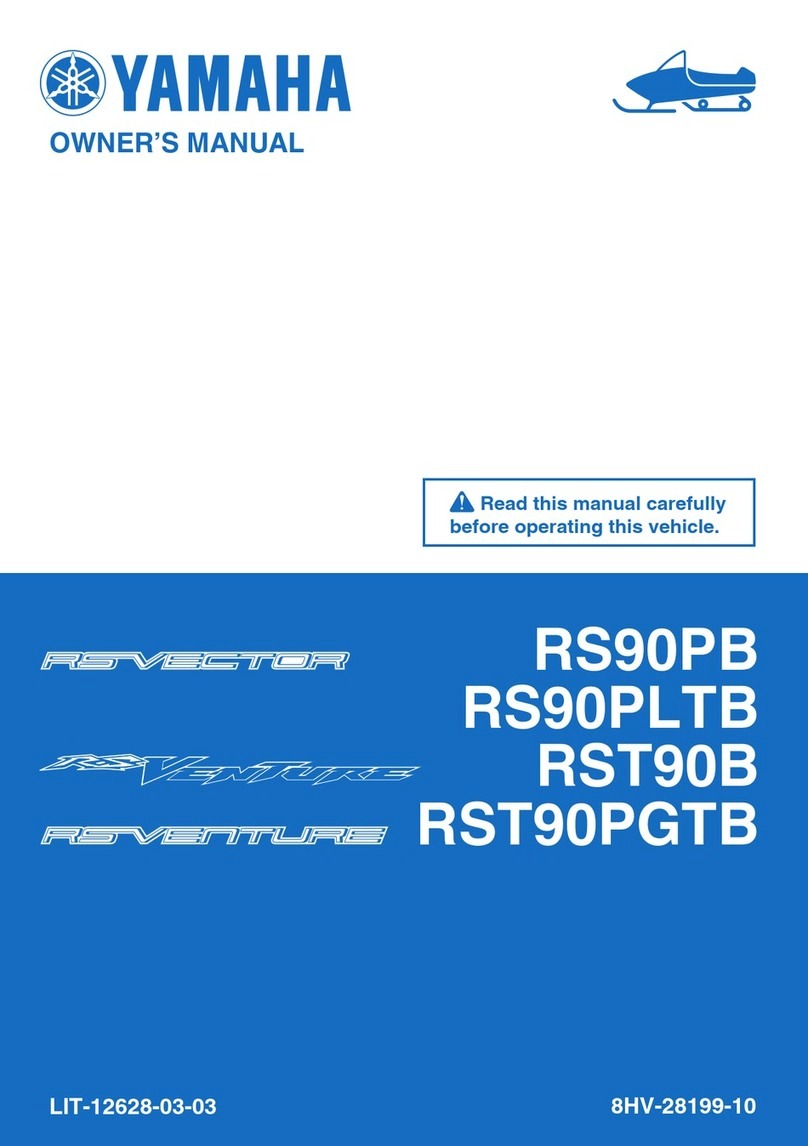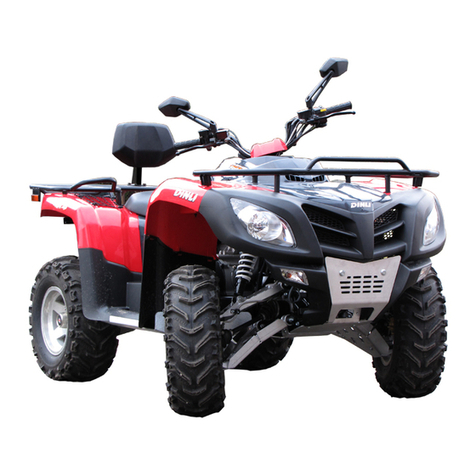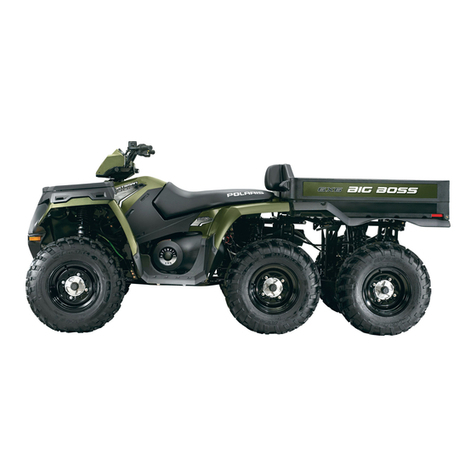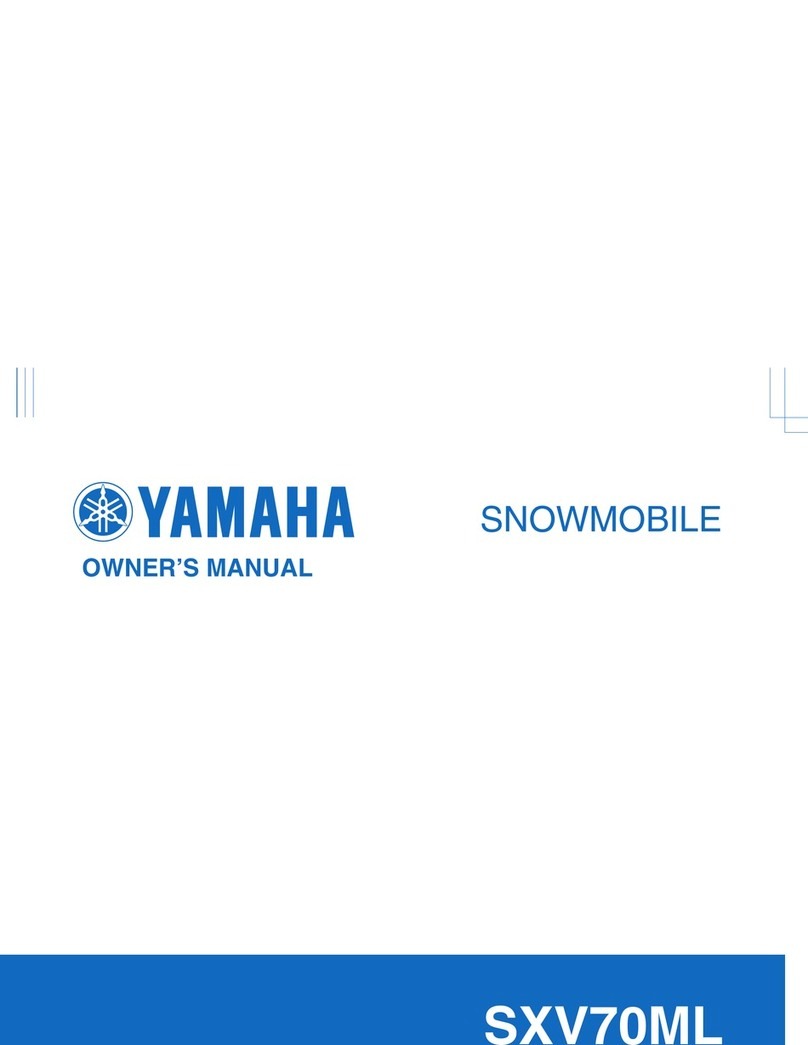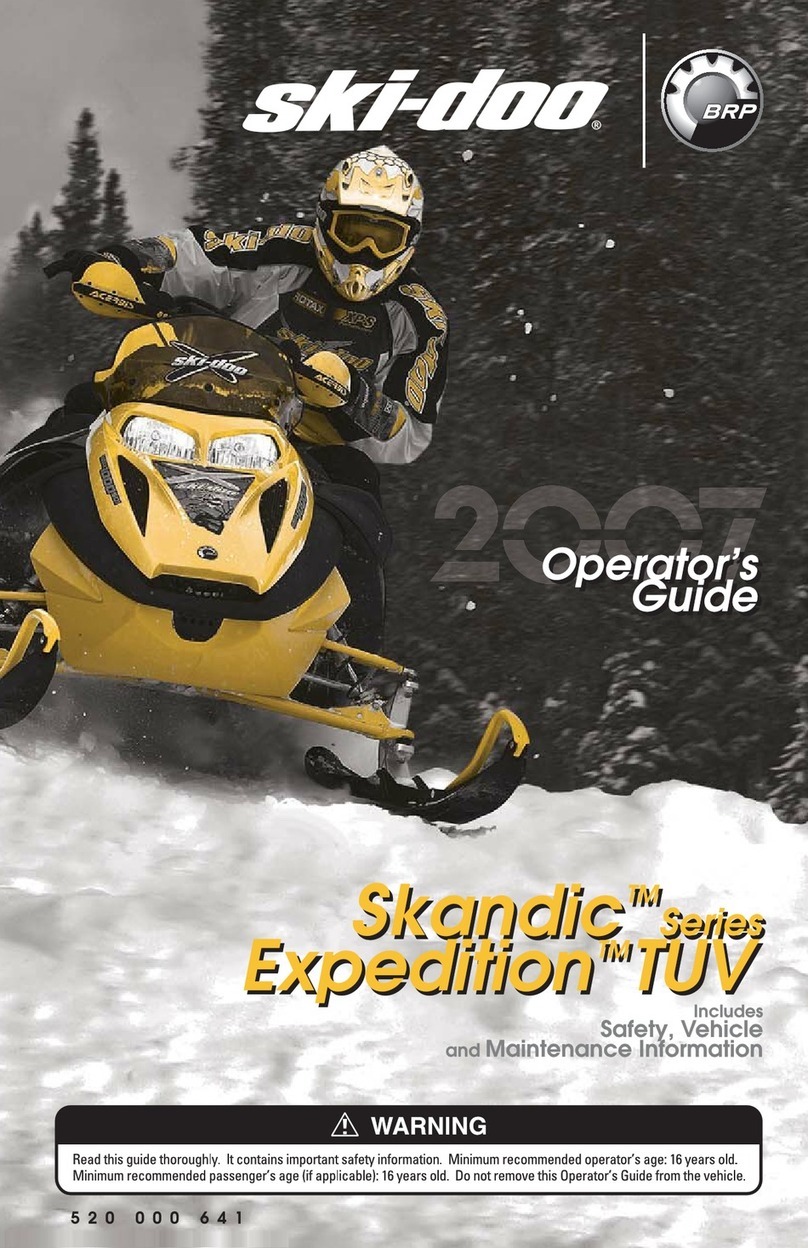Trail Rover ATV User manual

Owner’s Guide
&
Operations
Manual
C
.
TrailRover™ should not be ridden by
anyone under 16 years of age

2
Congratulations on the purchase of your new
Trail Rover All Terrain Vehicle.
e TrailRover™ ATV is the result of many years of experience in the nest
sporting, touring, and pace setting racing machines. is manual will provide
you with a basic understanding of the features and operation of your new
TrailRover™ ATV.
is manual includes important safety information, special techniques and skills
necessary to ride the ATV. It also includes basic maintenance and inspection
procedures. If you have any questions about the operation or maintenance of
your TrailRover™ ATV, please call us at (423) 349-2900 to speak to a factory
trained technical service representative.
Read this manual carefully. You should pay special attention to sections labeled
“W”, “ C” and “T”.
Failure to follow W instructions could result in severe injury or death to
the TrailRover™ operator, a bystander, or a person inspecting or repairing your
AT V.
A C indicates special precautions that must be taken to avoid damage to
t h e AT V.
A T provides key information to make procedures easier or more clear.
W
Your TrailRover™ ATV is not a toy and can be hazardous to operate. Read this
manual in its entirety before operating your ATV making sure you understand
all of the instructions prior to use.
Pay close attention to the and C labels on your TrailRover™
ATV and within this owner’s manual.
Never operate your TrailRover™ ATV without proper instruction.
Your TrailRover™ ATV should not be operated by a child under 16 years of age
because they may not be able to safely maneuver this ATV which may result in
serious injury or death.
Never use your TrailRover™ ATV without wearing an approved helmet and other
protective clothing

An Important Safety Notice
Read this manual carefully making sure you should understand the
instructions and warnings in the owner’s manual.
Pay Close attention to the warnings and labels on your TrailRover™.
Never operate your TrailRover™ without proper training and instruction.
Free training is available to anyone who buys a new ATV by calling 877-251-
8975 for more information.
is TrailRover™ and any other ATV over 90 cc should not be ridden by
anyone under 16 years of age.
is TrailRover™ is a high-performance ATV for o-road use only, for sport
type recreational use by experienced operators.
Your TrailRover™ ATV is not a toy and can be hazardous to operate. Your
TrailRover™ handles dierently from other vehicles, including motorcycles
and cars. A collision or rollover can occur quickly even during routine
maneuvers such as turning and riding on hills and over obstacles. If you fail
to take proper precautions, SEVERE INJURY OR DEATH can result if you do
not follow these instructions
• Take a training course.
• Always follow the age recommendation.
• Never allow a child under 16 years of age to operate an ATV over 90 cc.
• Never allow a child under 16 years of age to operate an ATV without adult
supervision and never allow continued use of an ATV by a child who does not
have the ability to operate it safely.
• Never operate at speeds that are too fast for your skills or riding conditions.
Always travel at a speed that is appropriate for the terrain, visibility, operating
conditions and experience level.
• Do not operate your TrailRover™ on any paved surfaces including roads,
sidewalks, driveways and parking lots.
• is TrailRover™ is designed for operation by a single user with no passengers.
Never carry a passenger.
• Always go slowly being very careful when operating in unfamiliar terrain.
Always be alert to changing terrain conditions.
• Never operate your TrailRover™ on excessively rough, slippery or loose terrain
until you have learned and practiced the skills necessary to control your ATV on
such terrain. Always be especially cautious on this kind or terrain.
• Never operate your Trail Rover™ on any public road or highway including dirt
and gravel roads. Your TrailRover™ is not designed for use on public roads.
• Never operate your TrailRover™ without wearing an approved motorcycle
helmet that ts properly. You should also wear eye protection (goggles of face
shield), gloves, boots, a long sleeved shirt or a jacket and long pants.
• Never consume alcohol or use drugs while operating your TrailRover™.

4
• Never use your TrailRover™ on hills that are too steep for the ATV or your abilities.
Practice on smaller hills before operating on steeper hills.
• Do not modify your TrailRover™ through improper installation or use of
accessories.
• Never attempt wheelies, jumps or other stunts.
• Always follow proper procedures for climbing hills as described in this manual.
Check the terrain carefully before climbing any hill. Never climb hills with
excessively loose or slippery surfaces. Shi your weight forward. Never open the
throttle suddenly or make sudden gear changes. Never go to the top of a hill at high
speed.
• Always follow proper procedure for going down hills and for braking on hills as
described in this manual. Check the terrain carefully before going down any hill.
Shi your weight backward. Never go down a hill at high speed. Avoid going down
any hill at an angle that would cause your TrailRover™ to lean sharply to one side. Go
straight down a hill where possible.
• Always follow proper procedures for crossing the side of a hill as described in this
manual. Avoid hills with excessively slippery or loose surfaces. Shi your weight to
the uphill side of the ATV. Never attempt to turn your TrailRover™ around on any
hill until you have mastered the turning technique described in this manual on level
ground. Avoid crossing the side of a steep hill if possible.
• Always use proper procedures if you stall or roll backwards when climbing a hill.
To avoid stalling, use the proper gear and maintain steady speed when climbing a
hill. If you stall or roll backwards, follow the special procedure for braking described
in this manual. Dismount on the uphill side or to a side if pointed straight uphill.
Turn the ATV around and remount, following the procedure described in this
manual.
• Always check for obstacles when riding in a new area.
• Never attempt to operate over large obstacles, such as rocks or fallen trees. Always
follow proper procedures when operating over obstacles as described in this manual.
• Always be careful when skidding or sliding. Learn to safely control skidding or
sliding by practicing at low speeds on level, smooth terrain. On extremely slippery
surfaces, like ice, go slowly and be very cautious in order to reduce the risk of
slipping or skidding out of control.
• Never operate your TrailRover™ in fast owing water or in water deeper than
recommended in this manual. Remember that wet brakes may have reduced
stopping ability. Test your brakes aer leaving water. If necessary, apply gentle
pressure several times to let friction dry the brake linings.
• Always use the tire size specied in this manual.
• Always maintain proper tire pressure as described in this manual.
• Never exceed the stated weight load capacity for your TrailRover™ Cargo should be
Safety Information

properly distributed and securely attached. Reduce speed and follow instructions
in this manual for carrying cargo for pulling a trailer. Allow greater distance for
braking.
• Inspect your TrailRover™ prior to each use to make sure it is in safe operating
condition. Always follow the inspection and maintenance procedures and schedules
described in the manual.
• Always keep both hands on the handlebars and both feet on the footpegs of the
ATV during operation.
• Drain all fuel from the fuel tank and carburetor before transporting your
TrailRover™.
W
POTENTIAL HAZARD
IMPROPER HANDLING OF GASOLINE
WHAT CAN HAPPEN
Gasoline can catch re and you could be severely burned.
HOW TO AVOID THE HAZARD
Always turn o the engine when adding fuel.
Do not add fuel immediately aer use while the engine is still hot.
Do not spill gasoline on the engine or exhaust pipe/muer when adding fuel.
Never add fuel while smoking or in the vicinity of sparks, open ames, or other
sources of ignition such as pilot lights of water heaters and clothes dryers.
When transporting your TrailRover™ be sure it is kept upright. Failure to do so
may allow fuel to leak out of the carburetor or fuel tank.
WHAT CAN HAPPEN
Gasoline is poisonous and can cause injuries
HOW TO AVOID THE HAZARD
If you should swallow some gasoline, inhale fumes or get gasoline in your
eyes, seek immediate medical attention. If gasoline spills on your skin, wash
with soap and water. If gasoline spills on your clothes, change your clothes and
wash them immediately.
Safety Information
Table of contents
Other Trail Rover Offroad Vehicle manuals
